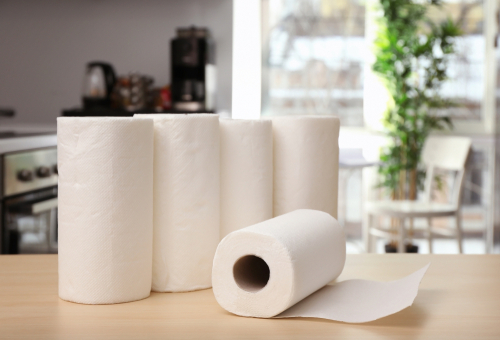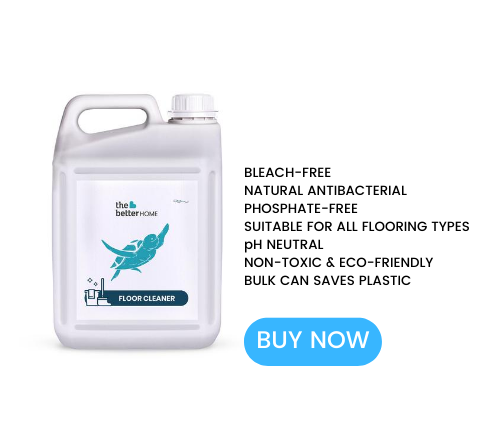Cloth, Paper or Sponge: What’s the Greenest Cleaning Option Out There?
Switching out single-use, non-biodegradable cleaning cloths with eco-friendly ones is a small but significant step to a green, zero-waste home.

If you are looking to reset your cleaning, one way to easily work sustainability into your daily routine is by taking a look at your cleaning equipment. The sponges, microfibre cloths and paper towels that we use all contribute staggeringly by way of non-biodegradable trash. We use these products daily and go through several of them a year. Many of these products are made plastic and other harsh chemicals, and once discarded, end up in landfills where they degrade into tiny particles that pollute the soil and water.
Let’s examine and break down some commonly used cleaning items.
Sponge wipes: If there are points for convenience, super-absorbent sponge wipes are a clear winner. Whether it’s dust, grease or spills, these wipes clean them all. They’re cheap, easy to find, simple to wash and dry fast. But, here’s the rub: most sponges are made of a combination of materials such as polyester and cellulose which makes them non-biodegradable and hard to recycle. Unlike the natural sea sponges they are named after, these synthetic wipes are far from eco-friendly as they contribute to landfill waste and pollute ocean waters.
Similarly, the sponges we use to clean dishes are made of foamy yellow polyester with an abrasive, scouring green side made of polyurethane – both oil-based, landfill-clogging materials.
Possible green alternatives to synthetic sponges are those made of natural vegetable cellulose and free of chemical dyes.
Paper towels: While these towels may be biodegradable in your home compost pit, they’re not exactly eco-friendly. First, much like regular paper, paper towels rely on wood pulp from virgin trees. It is estimated that to make just one ton of paper towels, 17 trees are used and over 70,000 litres of water are polluted. Second, paper towels are often treated with chlorine-based bleach to give them a clean white appearance. Next, since they are discarded in a heavily soiled state, contaminated with grease, grime, dust and bacteria, they don’t make good candidates for recycling. Finally, paper towels are designed for single use. Factor in all the energy costs and greenhouse gas emissions involved in various stages of their manufacture, packaging, stocking and transport across locations…all for just one use, and it turns they take a pretty heavy toll on the environment. So, go green by cutting down the number of paper towels you use and toss them in your compost bin when you are done.
Microfibre cloths: Lightweight, super-absorbent and quick-dry, microfibre cloths work like magic on every household surface, even without the aid of a cleaning liquid. Yet, it is a synthetic textile made of polyester and nylon – both petroleum-based products. While that’s not the reason to avoid using it, microfibre’s polluting nature surely is. As we noted here, synthetic fabrics such as fleece and microfibre cleaning cloths shed microscopic plastic fibres with every wash. These tiny strands of plastic escape sewage treatment plants and flow freely into water bodies where they end up inside the bodies of fish, trapped in their tissues. When fish that humans eat end up with plastic in their bodies, the pollution travels up the food chain. It has also been estimated that drinking water piped from lakes and rivers could be polluted by microplastics.
Cotton napkins: Reusable, biodegradable and long-lasting, cotton towels seem like the best and most eco-friendly option for dusting and mopping. However, cotton has its own planet-harming properties. It is cultivated as a monoculture crop, often with large volumes of toxic pesticides and herbicides which can be harmful to soil and groundwater. Inefficient water use among Indian cotton growers makes it a water-intensive crop. Cotton also has a large water footprint across the value chain – from ginning to dyeing and production of the final product. Thus, if you do invest in cleaning cloths made of virgin cotton, it is best to use them gently, wash them carefully with a mild, natural detergent, avoid the use of fabric softeners that reduce their absorbency and reuse them as many times as possible before discarding them.
That brings to the good, old, time-honoured option: upcycled rags! All of us have a pile of old clothes, bed linen and other textiles that are too worn out to be donated or handed down. Upcycling and reusing them as cleaning rags can significantly reduce your carbon footprint by adding a few years of useful life to these textiles, keeping them out of the garbage and taking some pressure off the market for virgin cotton and synthetic fabric. So, sort through your wardrobe and identify any clothes and old sheets that can be repurposed as cleaning rags. Remember that some fabrics such as cotton and linen are more absorbent than knitted textiles like hosiery or synthetic fabrics like polyester. So plan to use them accordingly. All you need to do next is cut them up into conveniently-sized bits and hem the edges, if necessary. Use these for a variety of purposes, from mopping, dusting to wiping other household surfaces and appliances, and you’re one step closer to a cleaner, greener home!
If you found our stories insightful, informative, or even just enjoyable, we invite you to consider making a voluntary payment to support the work we do at The Better India. Your contribution helps us continue producing quality content that educates, inspires, and drives positive change.
Choose one of the payment options below for your contribution-
By paying for the stories you value, you directly contribute to sustaining our efforts focused on making a difference in the world. Together, let's ensure that impactful stories continue to be told and shared, enriching lives and communities alike.
Thank you for your support. Here are some frequently asked questions you might find helpful to know why you are contributing?


This story made me
-
97
-
121
-
89
-
167















